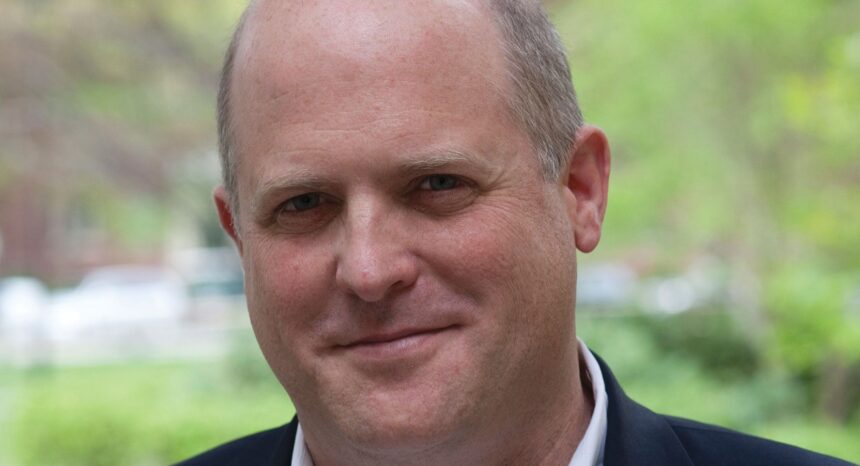Daniel Schrag is the Sturgis Hooper Professor of Geology and a professor of environmental science and engineering at Harvard University. While teaching an undergraduate course he calls “the climate energy challenge,” Schrag also directs the Harvard University Center for the Environment, and co-directs the Science, Technology and Public Policy Program at the Belfer Center for Science and International Affairs.
Schrag served on former President Barack Obama’s Council of Advisors for Science and Technology (PCAST) from 2009 to 2016, and has worked on a range of issues in climate science, geochemistry, earth history, and energy technology. Examples of his research include a 2017 study on the potential impacts of solar geoengineering on extreme heat events, as well as a 2016 paper that looks at how policy decisions in the coming years will influence global climate, ecosystems and human societies for thousands of years into the future.
Schrag recently sat down with Journalist’s Resource to offer tips on environmental and science reporting and share his own observations and perspective on the field. We edited or expanded upon some points to make them even more helpful, after consulting with Schrag.
1 – Understand the science
“Environmental journalism and science journalism are not the same thing, but there’s a big overlap,” Schrag said. A reporter doesn’t necessarily need a science degree to cover many aspects of environmental journalism, such as environmental law, policy and regulation, and environmental justice. But a basic understanding of climate science would help eliminate common errors reporters make in their coverage. “The rate of those mistakes would decrease if journalists had a little more training,” he said.
Science journalists, however, need a background in science. “Science journalism in general has suffered for a very long time. Imagine if someone was covering the financial section of a newspaper and had no economics or financial training … It wouldn’t happen,” Schrag said. He said training for science journalists could consist of an undergraduate degree or training in chemistry or physics, or a science fellowship, depending on the journalist and type of reporting he or she does.
2 – Change your focus
“Climate change is here, it’s happening and going to be with us for thousands of years,” said Schrag. Journalists should be thinking more about how humans can manage climate change – not stop it. They also should focus on communicating the realities of a changing climate. “We do ultimately have to stop greenhouse gas emissions from entering the atmosphere, but that’s going to take a very long time, a century at best,” he said.
3 – Include the correct context
The goal of environmental journalists should be to communicate to the public about what’s going on in the correct context and timescales of climate change. “That includes natural phenomenon, or unnatural,” said Schrag. For example, when Hurricane Harvey dropped over 50 inches of rain near Houston, Texas in September 2017, it was the first time a single place in the continental U.S. had experienced that amount of rain during one storm system, he said. “You could never say that this particular hurricane was caused by climate change,” Schrag said. “But you can say climate change leads to conditions that make these hurricanes worse, and makes it rain more, makes the water in the ocean warmer for the hurricane to grow faster.”
4 – Tell the human story
The impacts of climate-related events can profoundly touch, or sometimes devastate, people and communities around the globe. According to Schrag, there is a place for both scientifically-trained reporters and journalists capable of capturing the emotional impacts of climate change. “Sometimes I feel environmental journalism has grown so close to science writing, I’m afraid it’s lost that emotion.”
5 – Use research to challenge leaders
Schrag criticized President Donald Trump’s decisions to appoint, or try to appoint, government officials who oppose scientific consensus and to leave key scientific leadership positions vacant. He noted that journalists seem to have backed off environmental coverage lately. “I think we’ve all become a little numb to the Trump phenomenon … I haven’t seen a lot of great journalism lately on the environment, partly because they [journalists] might feel there is no audience.”
Journalists, he said, are a key part of holding agencies and officials accountable. “The idea that he [Trump] would nominate someone with no science background and no understanding of environmental issues and is ideologically opposed to it is typical … So, this is a tough time.”
6 – Acknowledge partisan divides
Managing the effects of climate change and environmental degradation has become a deeply partisan issue. “Your views on climate can be almost perfectly predicted from a handful of other questions that have nothing to do with climate … the way you feel about government, about a variety of other issues not related to the environmental at all are predictive about how you’re going to feel about climate change and that’s unfortunate,” said Schrag. Environmental issues often cut across beats, such as criminal justice, politics and economics. Leaning on experts and credible scientists is essential to providing the public with clear, evidence-based information in all areas of environmental reporting. “Journalists need to be fearless and be bold … there are so many attacks on our environmental regulations and our environmental sense of decency, journalists are a critical part of standing up to that and they need to be honest about what they see.”
Want more journalism tips from the experts? Check out our tip sheets on media law, reporting on natural disasters and how to de-polarize news audiences.


Expert Commentary